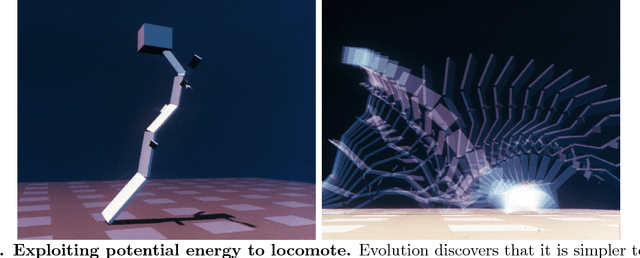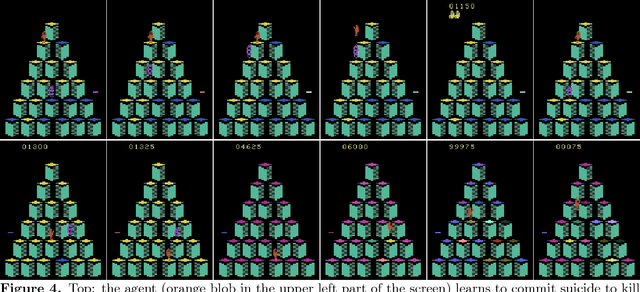David M. Bryson
The Surprising Creativity of Digital Evolution: A Collection of Anecdotes from the Evolutionary Computation and Artificial Life Research Communities
Aug 14, 2018



Abstract:Biological evolution provides a creative fount of complex and subtle adaptations, often surprising the scientists who discover them. However, because evolution is an algorithmic process that transcends the substrate in which it occurs, evolution's creativity is not limited to nature. Indeed, many researchers in the field of digital evolution have observed their evolving algorithms and organisms subverting their intentions, exposing unrecognized bugs in their code, producing unexpected adaptations, or exhibiting outcomes uncannily convergent with ones in nature. Such stories routinely reveal creativity by evolution in these digital worlds, but they rarely fit into the standard scientific narrative. Instead they are often treated as mere obstacles to be overcome, rather than results that warrant study in their own right. The stories themselves are traded among researchers through oral tradition, but that mode of information transmission is inefficient and prone to error and outright loss. Moreover, the fact that these stories tend to be shared only among practitioners means that many natural scientists do not realize how interesting and lifelike digital organisms are and how natural their evolution can be. To our knowledge, no collection of such anecdotes has been published before. This paper is the crowd-sourced product of researchers in the fields of artificial life and evolutionary computation who have provided first-hand accounts of such cases. It thus serves as a written, fact-checked collection of scientifically important and even entertaining stories. In doing so we also present here substantial evidence that the existence and importance of evolutionary surprises extends beyond the natural world, and may indeed be a universal property of all complex evolving systems.
Understanding Evolutionary Potential in Virtual CPU Instruction Set Architectures
Oct 28, 2013



Abstract:We investigate fundamental decisions in the design of instruction set architectures for linear genetic programs that are used as both model systems in evolutionary biology and underlying solution representations in evolutionary computation. We subjected digital organisms with each tested architecture to seven different computational environments designed to present a range of evolutionary challenges. Our goal was to engineer a general purpose architecture that would be effective under a broad range of evolutionary conditions. We evaluated six different types of architectural features for the virtual CPUs: (1) genetic flexibility: we allowed digital organisms to more precisely modify the function of genetic instructions, (2) memory: we provided an increased number of registers in the virtual CPUs, (3) decoupled sensors and actuators: we separated input and output operations to enable greater control over data flow. We also tested a variety of methods to regulate expression: (4) explicit labels that allow programs to dynamically refer to specific genome positions, (5) position-relative search instructions, and (6) multiple new flow control instructions, including conditionals and jumps. Each of these features also adds complication to the instruction set and risks slowing evolution due to epistatic interactions. Two features (multiple argument specification and separated I/O) demonstrated substantial improvements int the majority of test environments. Some of the remaining tested modifications were detrimental, thought most exhibit no systematic effects on evolutionary potential, highlighting the robustness of digital evolution. Combined, these observations enhance our understanding of how instruction architecture impacts evolutionary potential, enabling the creation of architectures that support more rapid evolution of complex solutions to a broad range of challenges.
 Add to Chrome
Add to Chrome Add to Firefox
Add to Firefox Add to Edge
Add to Edge